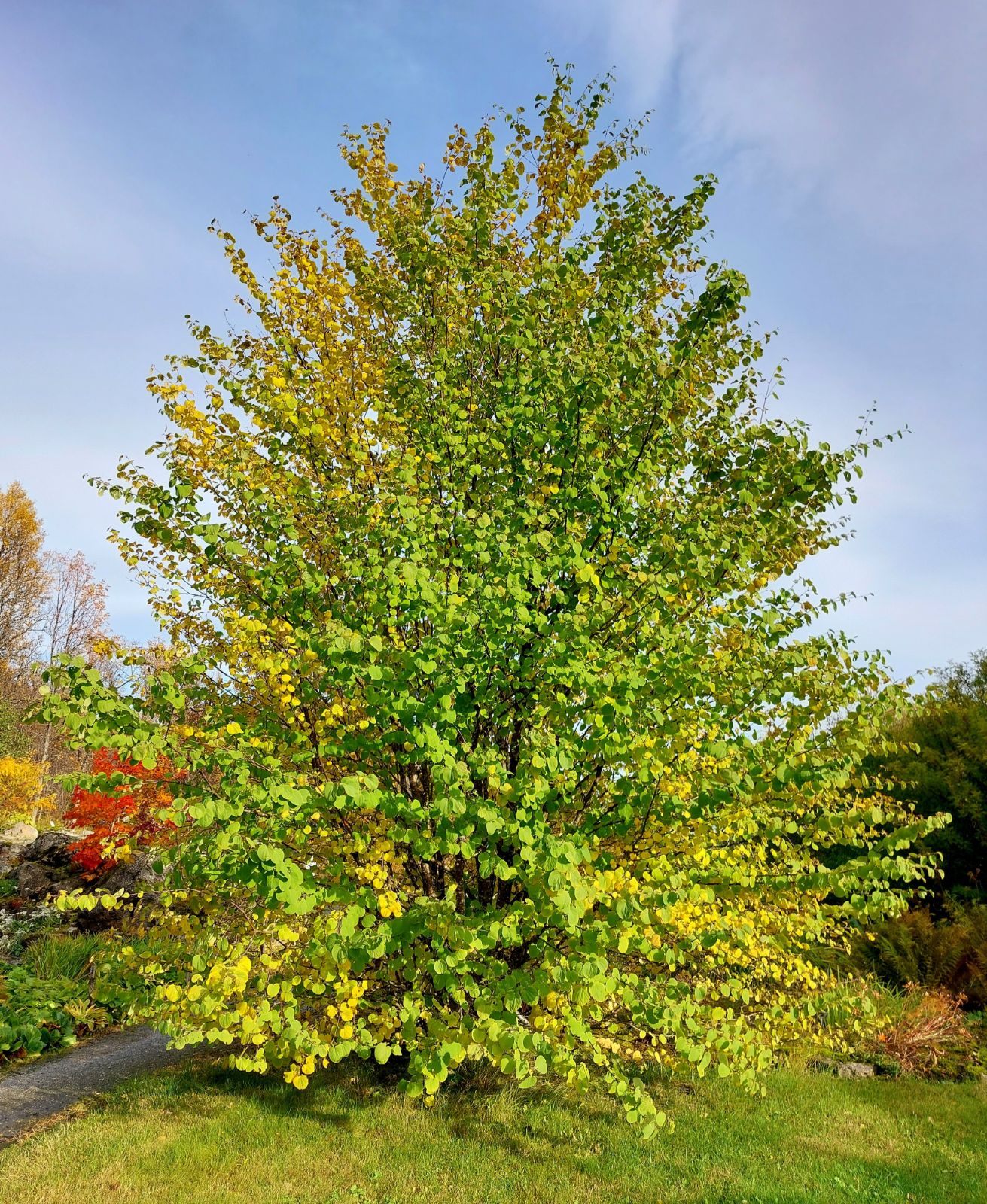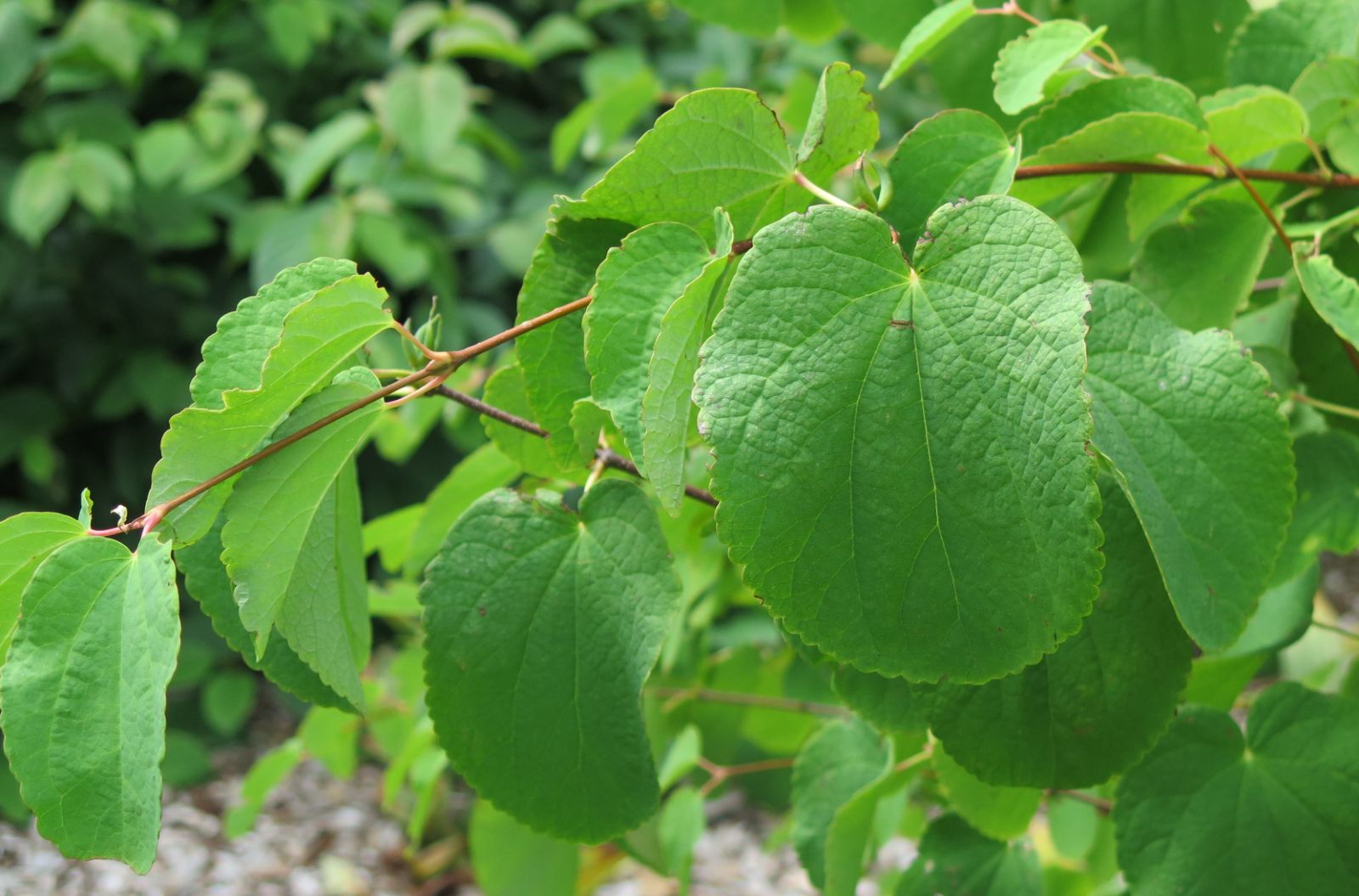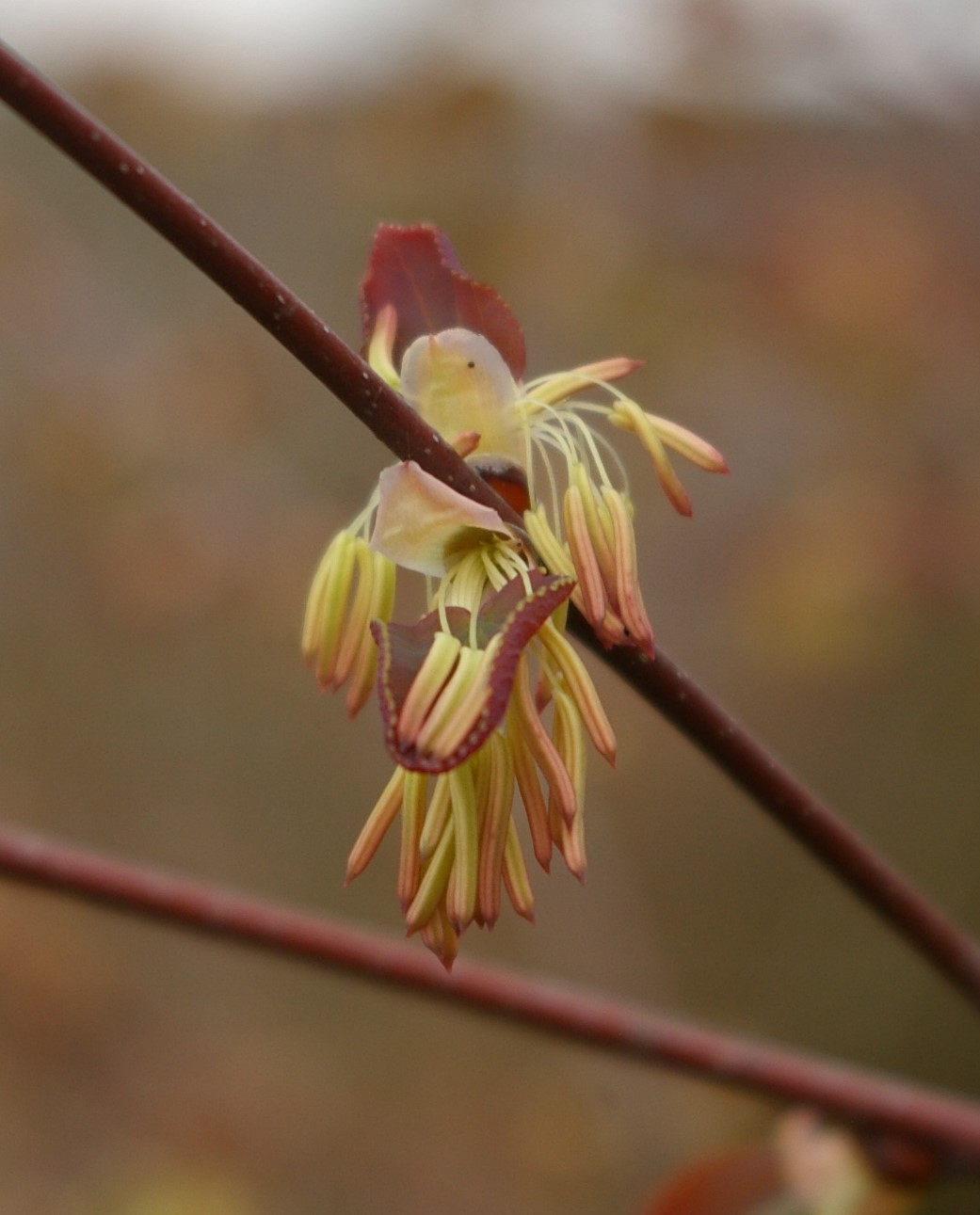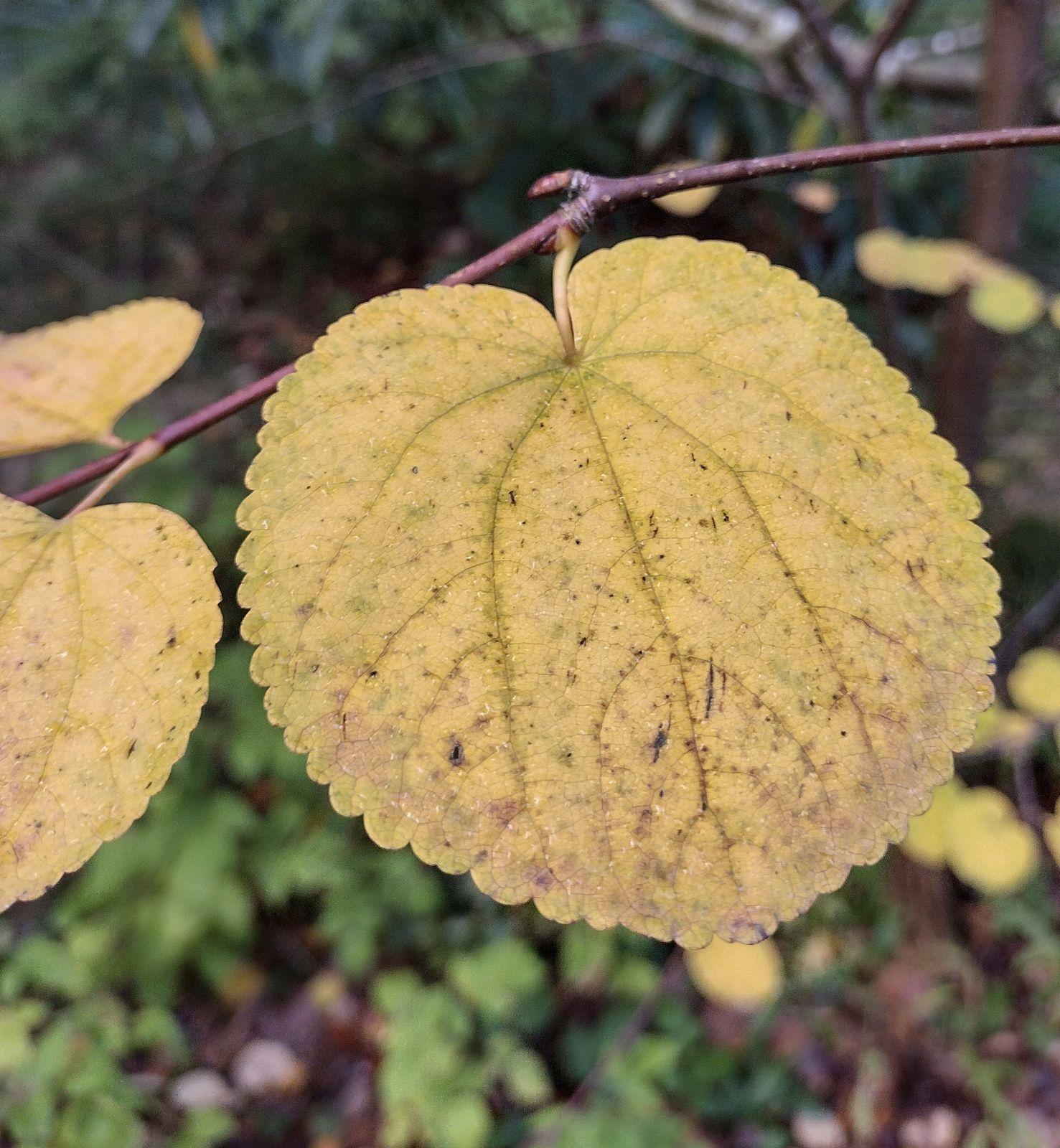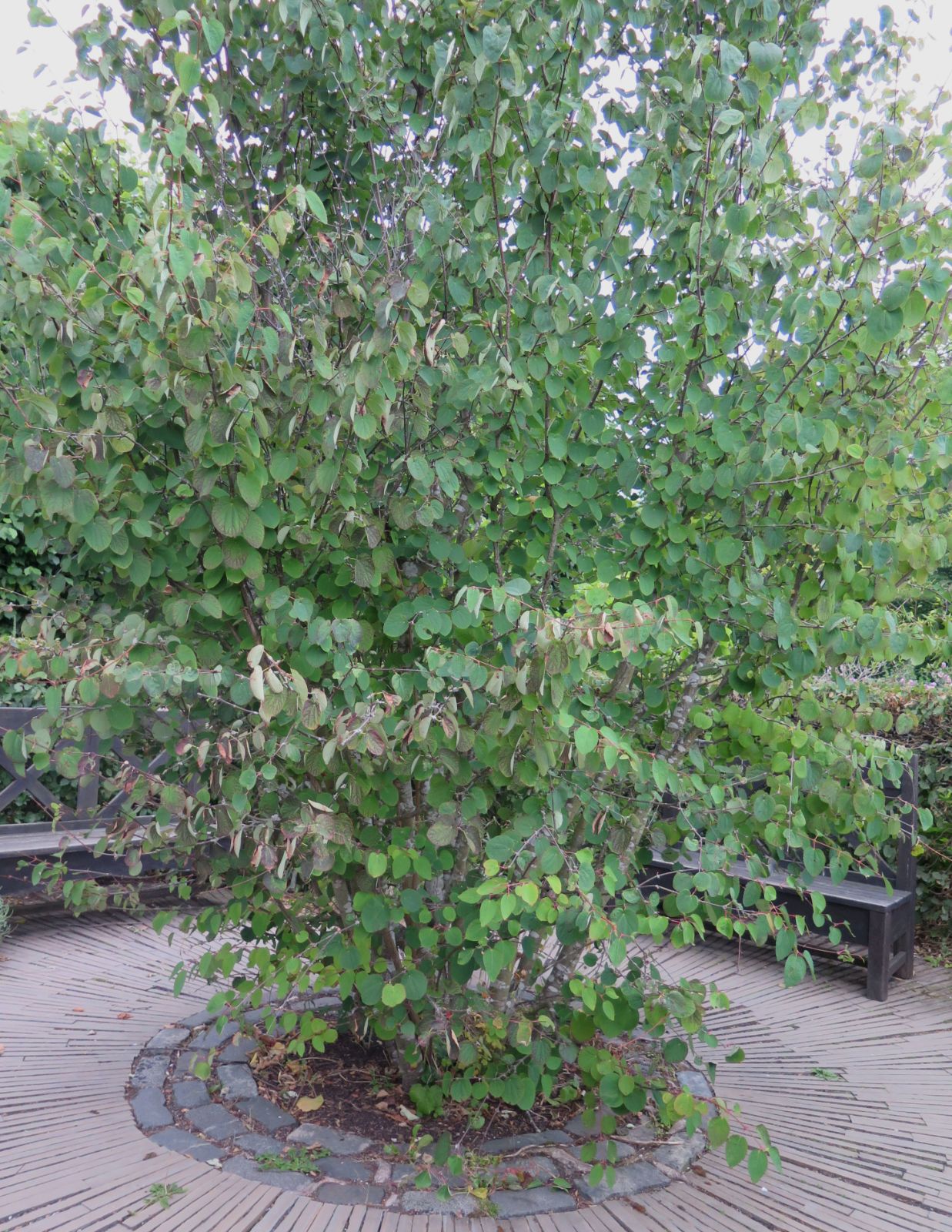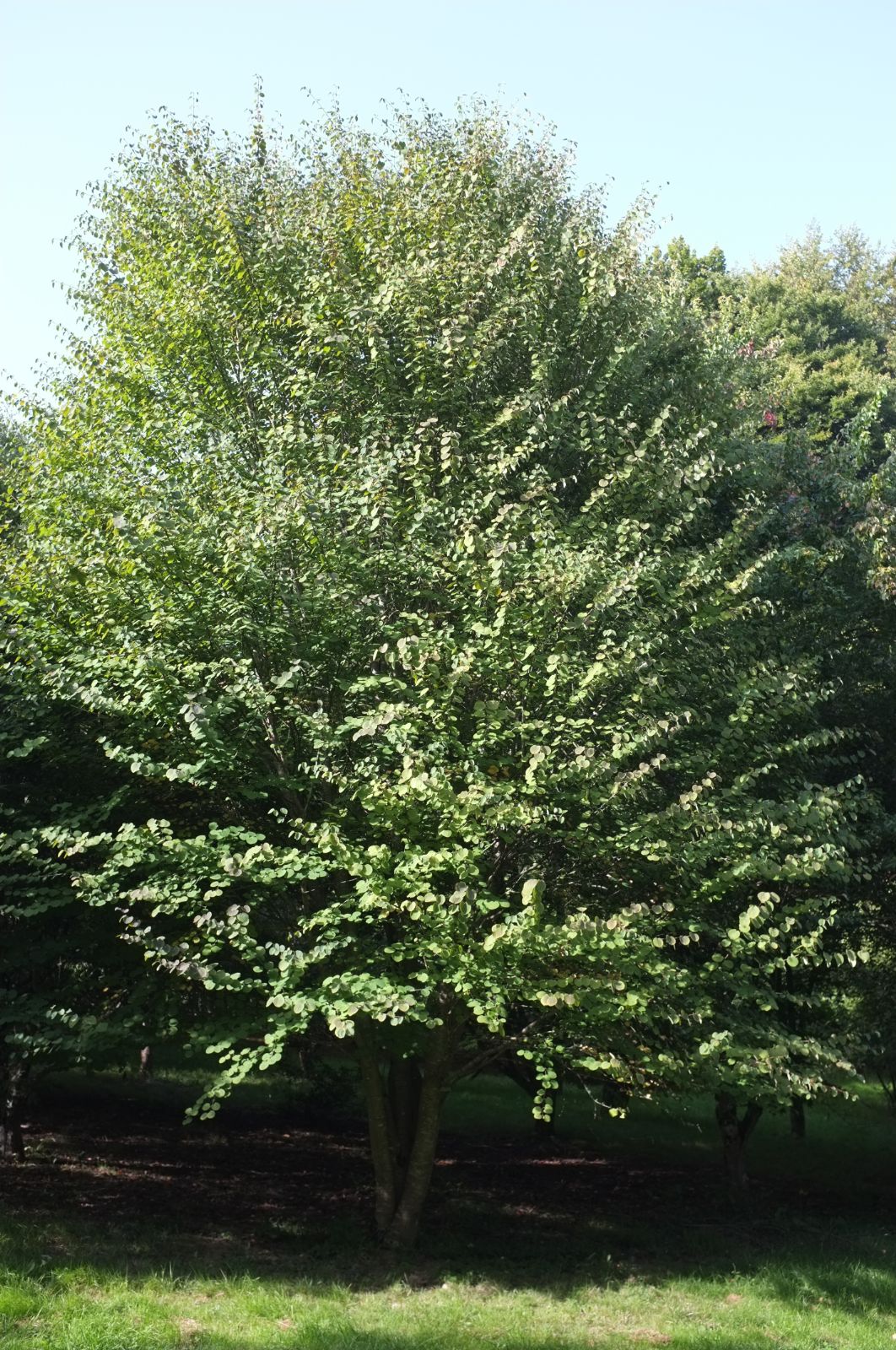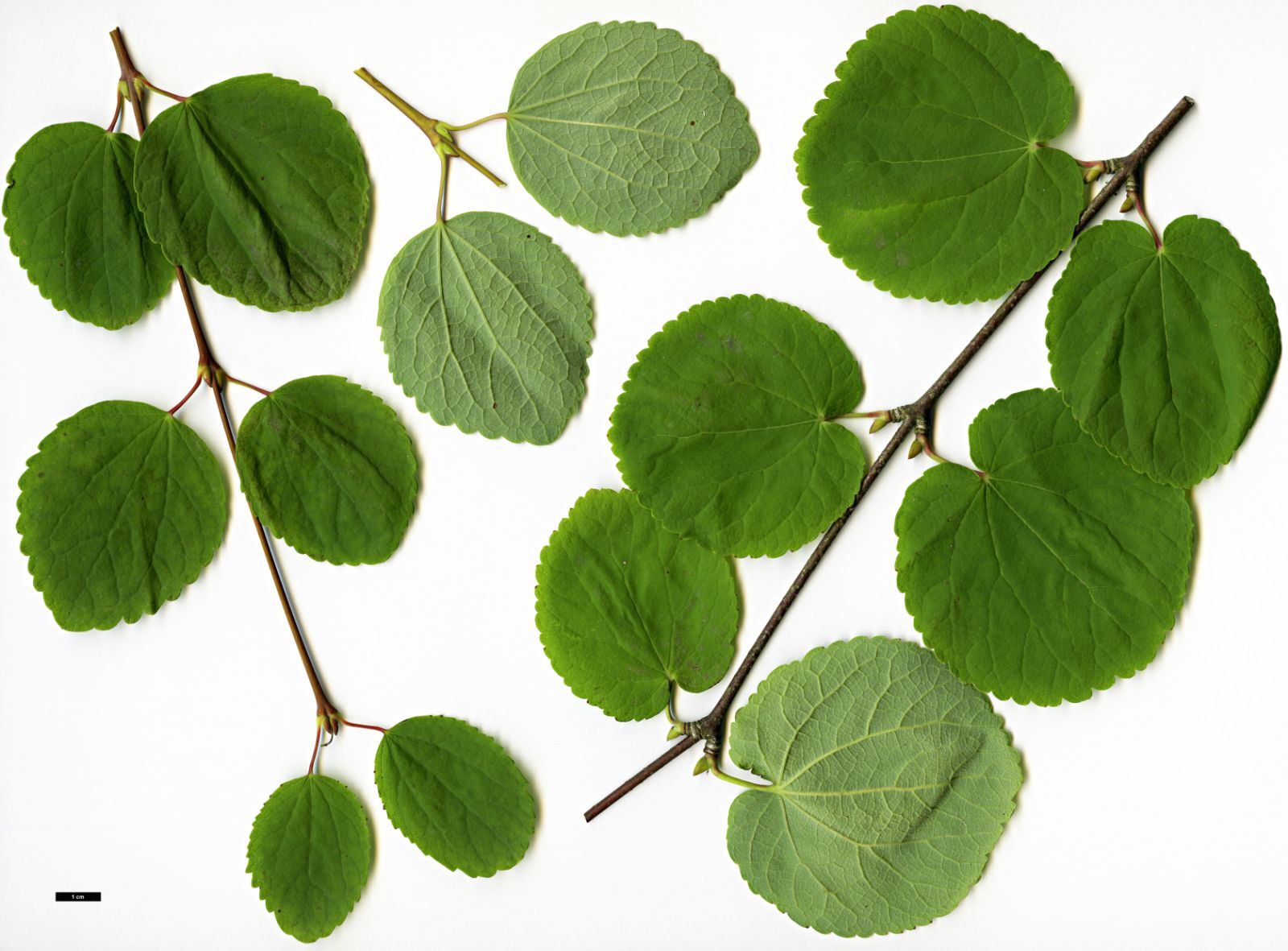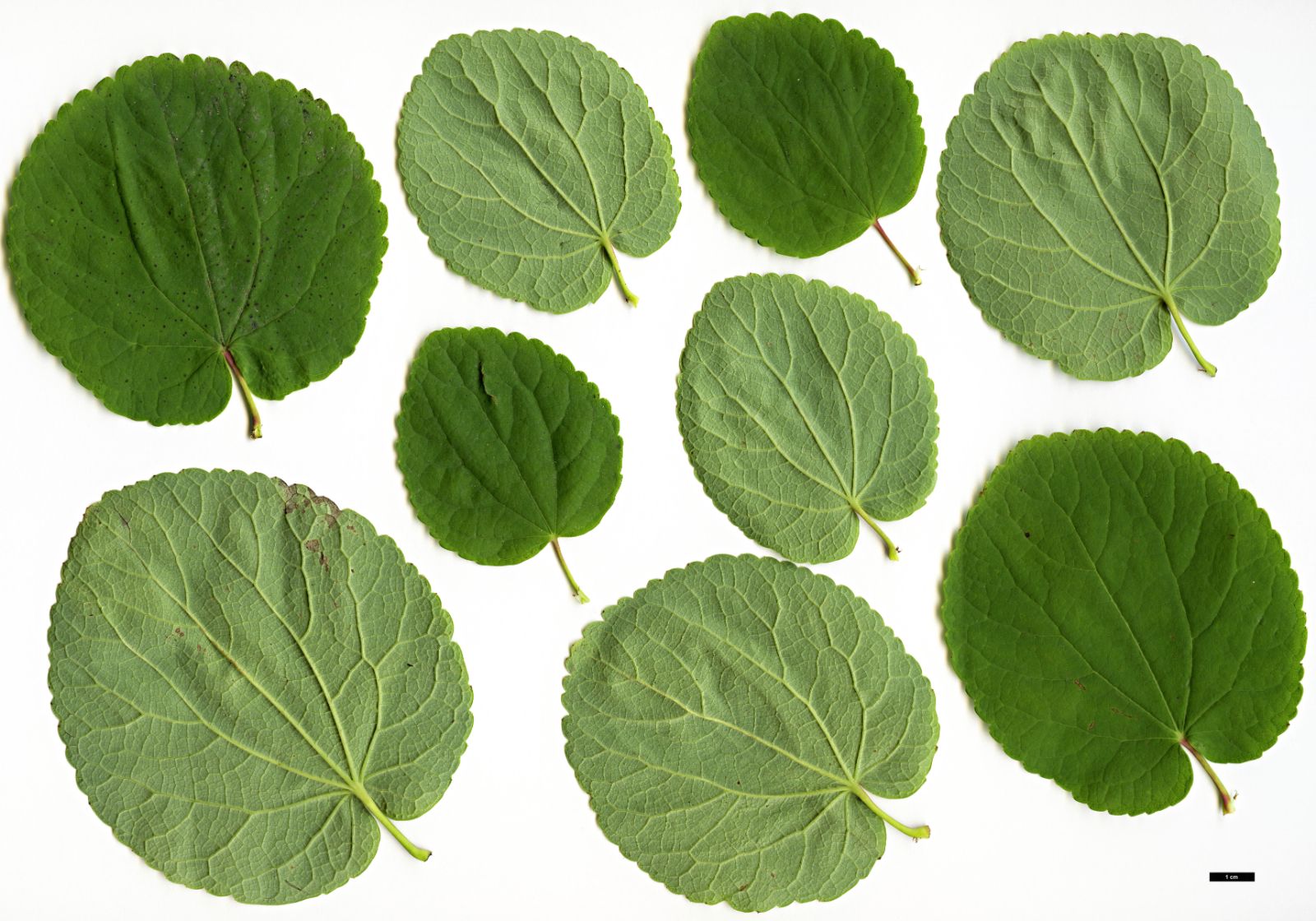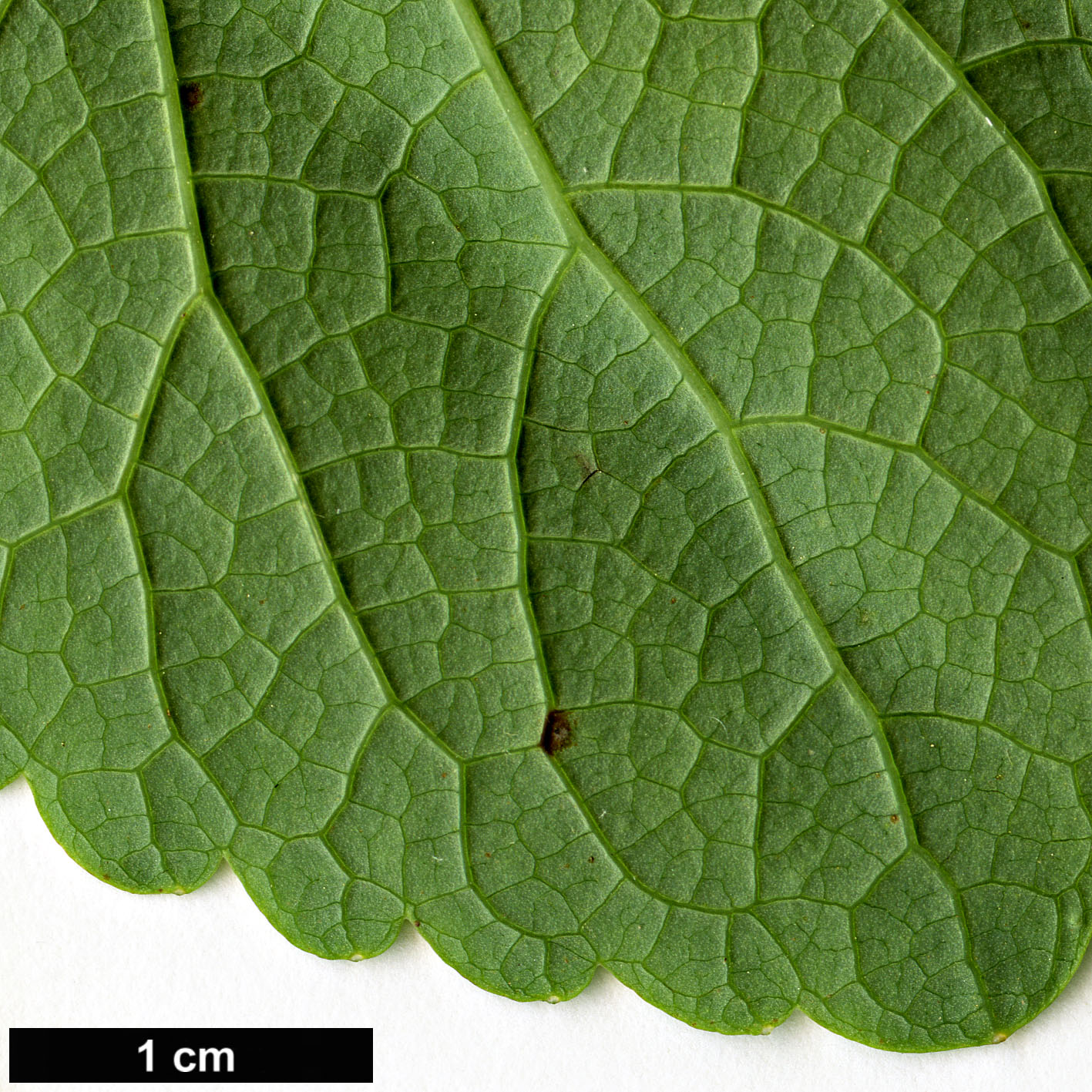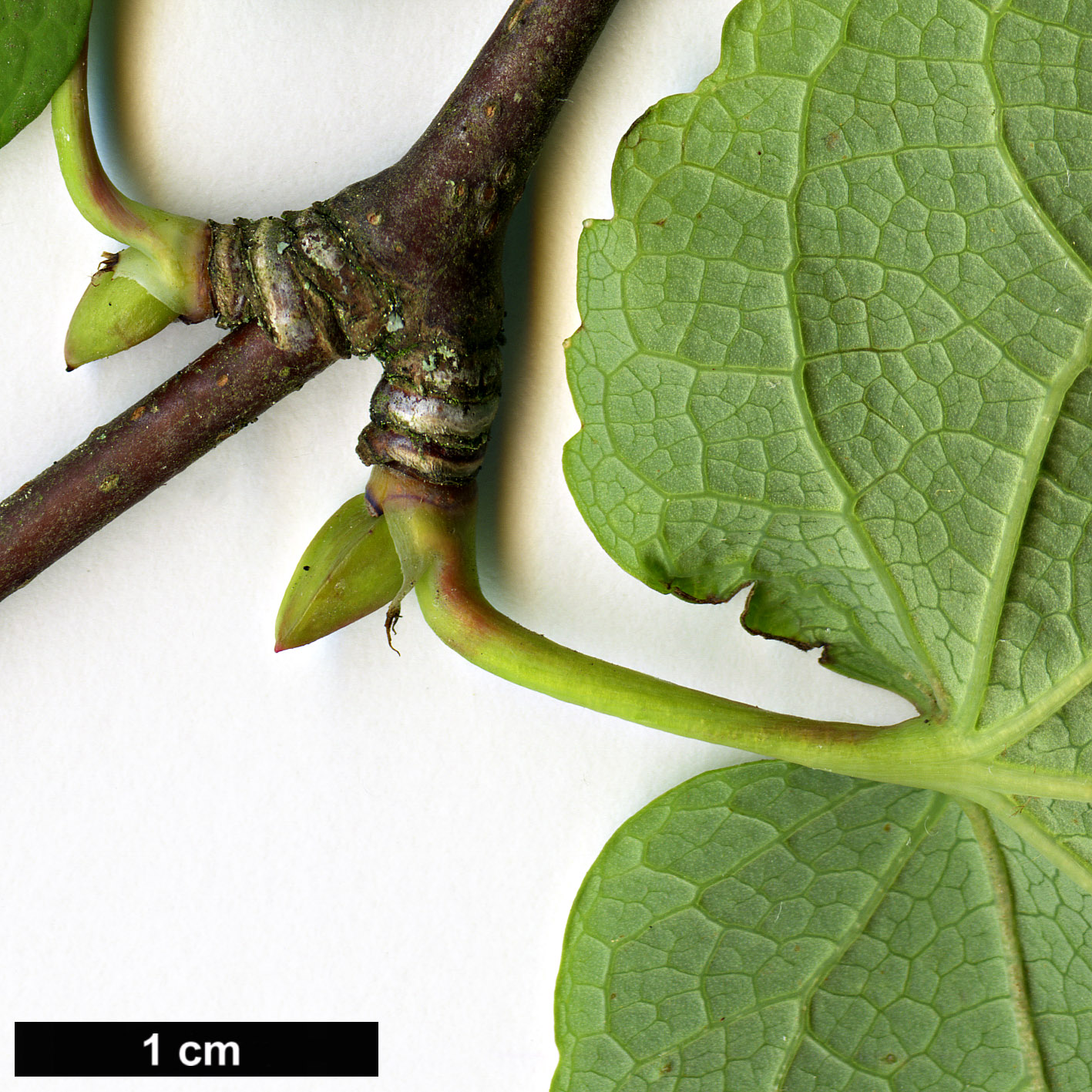Cercidiphyllum magnificum
Sponsor
Kindly sponsored by
William & Griselda Kerr
Credits
Julian Sutton & John Grimshaw (2021)
Recommended citation
Sutton, J. & Grimshaw, J.M. (2021), 'Cercidiphyllum magnificum' from the website Trees and Shrubs Online (treesandshrubsonline.
Genus
Common Names
- Katsura
- Magnificent Katsura
- Hiroha-katsura
Synonyms
- Cercidiphyllum japonicum var. magnificum Nakai
Small tree (only rarely to 20 m × 40 cm dbh), very similar to C. japonicum and sometimes difficult to distinguish, typically differing from it in the following ways. Bark smoother, becoming fissured only in very old trees; usually only single-trunked in cultivation, although often multi-stemmed in the wild. Long-shoot leaves usually somewhat larger, to 11 cm long, more likely to be cordate at the base; more deeply crenate margins are sometimes claimed. Seeds often with a wing at the apex as well as the base. (Boufford & Ohba 2006; Crane & DuVal 2013; Kubo & Sakio 2020; Bean 1976; Ohwi 1965).
Distribution Japan C and N Honshu
Habitat Riparian areas of subalpine forests
USDA Hardiness Zone 4-8
RHS Hardiness Rating H5
Conservation status Least concern (LC)
It seems impossible to discuss Cercidiphyllum magnificum except by comparison with its more familiar, close relative C. japonicum, which it replaces at higher altitudes in Honshu. Taken out of their ecological contexts, the two trees look very similar in the garden. While undeniably distinguishable, if one knows what to look for, opinion is divided as to whether C. magnificum has distinctive horticultural merits. While Jacobson (1996) contends that it is ‘easily distinguishable any day of the year from a regular Katsura’, Dirr (2009) reckons that ‘the everyday gardener would have no inkling that this was a distinct species or variety’. We tend to the latter view. It is, however, especially hardy and more suitable for the very coldest parts of our area.
This is a smaller tree than Cercidiphyllum japonicum, with smoother bark and, on average, larger leaves. First described in 1919 as a variety of C. japonicum, its status as a distinct species is now widely accepted (e.g. Iwatsuki, Boufford & Ohba 2006; Royal Botanic Gardens, Kew 2021). Nakai’s epithet magnificum would perhaps suit the familiar Katsura even better. These are genetically distinct sister species (Qi et al. 2012); while the two occasionally meet at around 1600 m in the mountains of Honshu (Kubo & Sakio 2020), there are no well documented hybrids. However, there is molecular evidence that the very hardy Hokkaido populations of C. japonicum are the result of ancient introgressive hybridization with C. magnificum (Qi et al. 2012). This possibility should be borne in mind when raising seed set in gardens where both grow.
Cercidiphyllum magnificum is restricted to the subalpine zone of the Japanese Alps and the area around Nikko, Honshu (Spongberg 1979, Crane & DuVal 2013). Here it is associated with Betula ermanii, Acer shirasawanum and Pterostyrax hispidus in moister streamside habitats, sometimes on steep, avalanche-prone slopes (Kubo & Sakio 2020). At one wild site, trees were typically multistemmed (like C. japonicum, it sprouts from the base), with procumbent trunks averaging 5 m × 10 cm dbh (Kubo & Sakio 2020). These somewhat ‘sagging’ stems seem to be caused by snow deforming them each winter (Lancaster 2016).
The species was introduced to western cultivation in 1920, by seed sent from the University of Tokyo to the Arnold Arboretum; plants from that introduction no longer grow at the Arnold (Spongberg 1979). Seed from Tokyo reached Europe in 1928, with plants raised at both Gothenburg Botanical Garden, Sweden (where no specimens this old survive today – Gothenburg Botanical Garden 2021) and the Kórnik Arboretum, Poland (Andrews 1998). There have been numerous subsequent collections; those by the Nordic Arboretum Commitee (NAU) expedition of 1976 have been significant in Scandinavia (Leverenz 2007; Arboretum Mustila 2021).
By nature a smaller tree than Cercidiphyllum japonicum, and being more recently introduced, specimens tend to be less impressive. Two good examples from parts of Britain with very different climates give an idea of what is possible. A tree planted in 1975 at Linn Botanic Gardens in the west of Scotland measured 12 m × 97 cm in 2012, while one dating from 1990 at RHS Garden Wisley in the warmer, drier south east of England had reached 9 m × 96 cm by 2019 (The Tree Register 2021). Roy Lancaster (2016) reported on a 10.6 m specimen planted in 1980 at Arboretum des Grandes Bruyères, Ingrannes, France, but while it is represented in Belgian collections (Plantcol 2021), this very cold-hardy species comes to the fore further north in continental Europe. There are several specimens at Gothenburg Botanical Garden, Sweden, the oldest from a 1956 accession (Gothenburg Botanical Garden 2021), while there are excellent trees at the Milde Arboretum, Bergen, Norway from seed collected at around 2000 m by the 1976 NAU expedition (University of Bergen 2021; Arboretum Mustila 2021); trees from the latter collection are also thriving in southern Finland (Arboretum Mustila 2021). It is thriving at Tromsø Arctic-Alpine Botanical Garden. C. magnificum where it performs very much better than C. japonicum this far north (G. Harstad pers. comm. 2023).
In North America it is mainly a tree of large collections on both seaboards (Arnold Arboretum 2021; US National Arboretum 2021; JC Raulston Arboretum 2021; University of British Columbia 2021; Hoyt Arboretum 2021), although it is sometimes offered commercially. It is unlikely to thrive without heroic measures in summer-dry areas.

